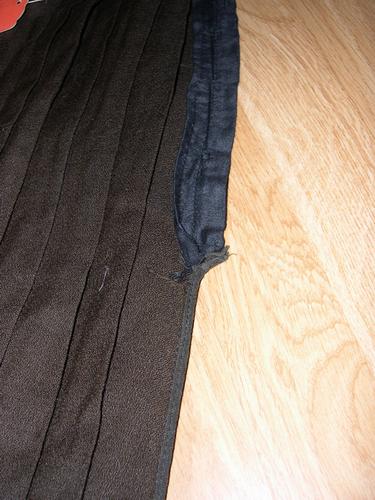 The pattern for the skirt is incredibly simple. It's two rectangles of fabric. The finished measurements are 30 inches wide by 35 inches long. Including seam allowances and hem, the original measurements are 32 inches wide by 38 inches long. The waist measures 25 inches.
|
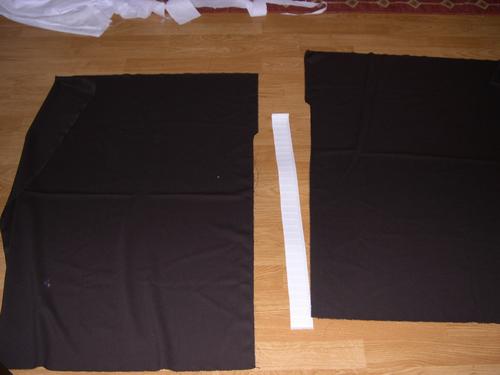 The first step is to cut your fabric. Since the pieces are straight, it's easiest to tear your fabric. This will also give perfectly straight lines without having to think about it. Then, on each piece of fabric, tear a strip off about 1/2 inch in from the edge to about 10 1/2 inches from the top. cut off, rounding corner slightly to give you a shape like in the picture. |
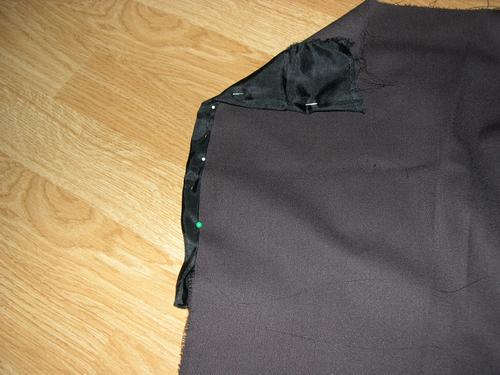
Next, prepare the placket. The placket is on the left side of the skirt.
|
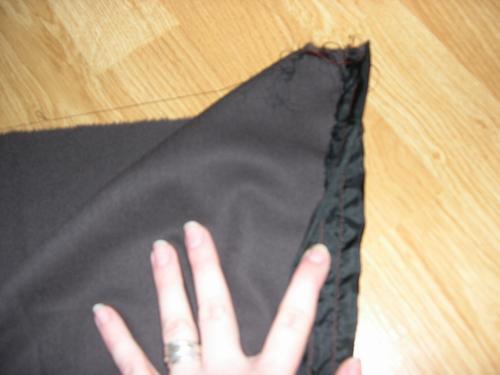 A picture of the above step. You can see the two lines of stitching, one about 1/2 inch in, the other just hemming the placket. |
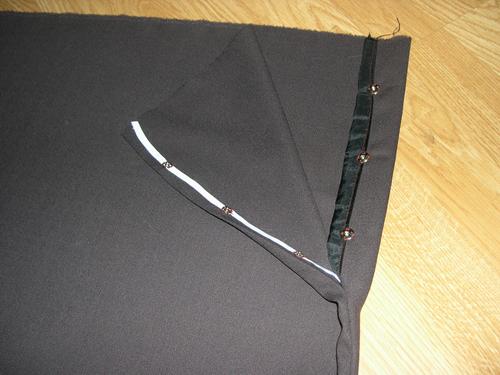 Time for closures! On the front, sew the top part of three snaps, the first, 3 inches from the top, the second, 5 1/2 inches from the top, the last 8 inches from the top. The top and bottom snap are just sewn to the placket, no stitches reach the outside fabric. The middle snap has one or two thread catch the outside fabric. This keeps the placket from turning out. Sew the corresponding bottom halves of the snaps on the back placket edge. |
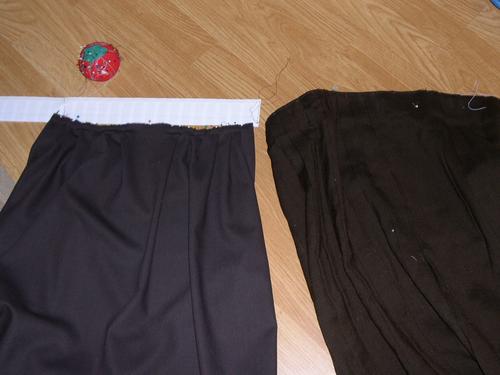 Now it's time to pleat! The original, seen on the right (somewhat obviously!) has a center front box pleat 4 inches wide. The rest of the pleats are back facing knife pleats which have 1 inch showing and 1/2 inch turned under. They end in an inverted back pleat about 2 1/2 inches to the right of the center back. I decided to center this back pleat on my reproduction. |
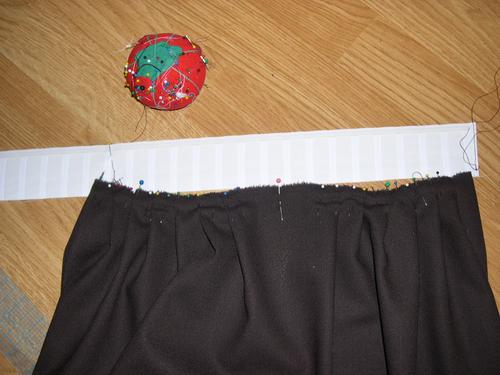 Next, cut a piece of the curtain tape to your waist measurement, plus 1 inch. The tape I found is 3 inches wide, so I had to cut it down to 1 1/2 inches as well. Fold the ends under and hem. It should now match your waist measurement. |
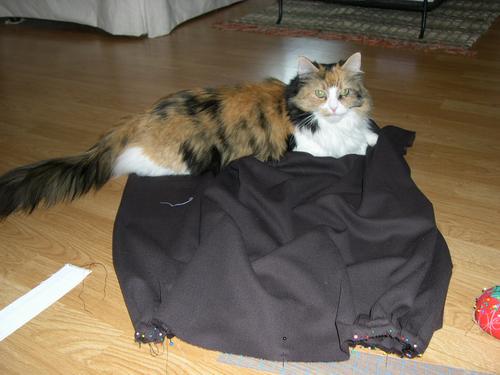 Find a cat to sit on your work. |
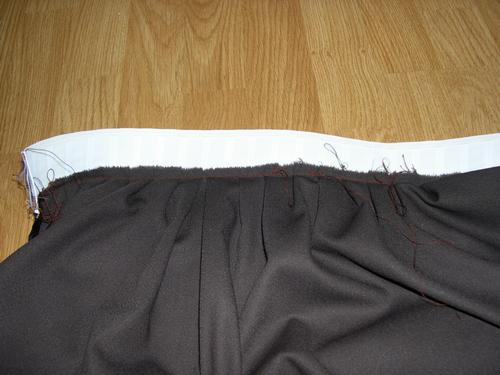 Starting at the back edge, pin the curtain tape to the wrong side of the pleats. This edge should be even with the edge of the curtain tape. Continue pinning all around. There should be about 1 inch of skirt leftover once you get to the end. Sew the tape on, about 1/2 inch from the top of the skirt. Be careful to keep the pleats straight. The picture at left shows what this looks like from the right side. |
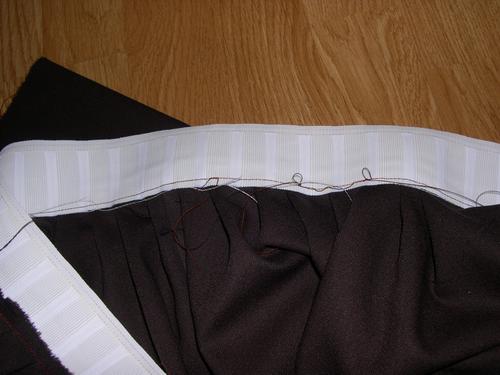 A view of the above step from the wrong side of the skirt. |
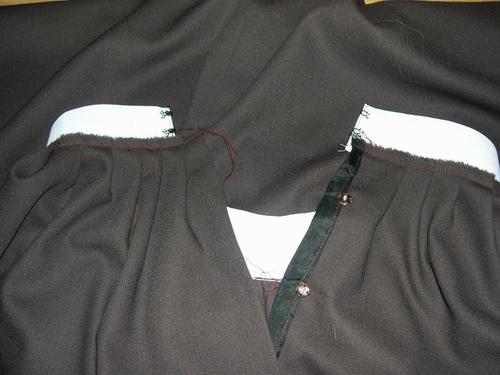 More closures! Put two hooks directly at the front edge of the curtain tape and two eyes directly at the edge of the skirt on the back edge of the curtain tape. |
 What the waistband looks like when it's folded under. |
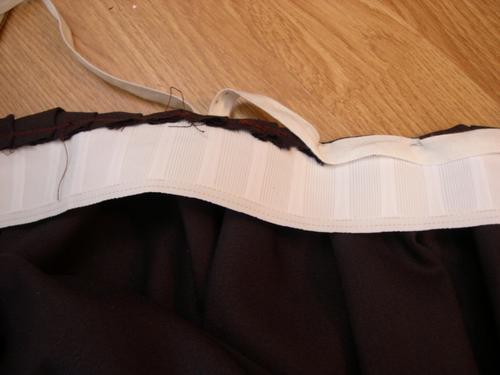 Next step, bind the top edge. With the waistband folded under, pin the twill tape over the raw edge, through all the layers-the raw edge, the curtain tape and the right side. Sew through all these layers, again being careful to keep the pleats straight. You'll have sewn the fold down so the waist tape has no chance of flipping up. |
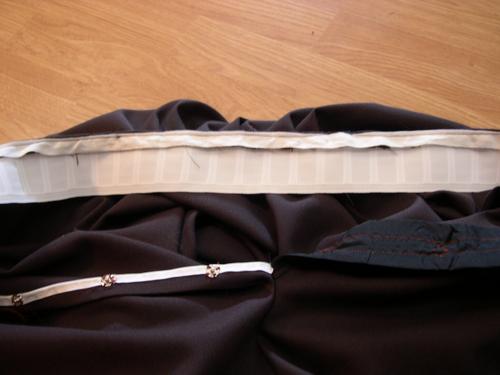 A picture of what it looks like sewn. |
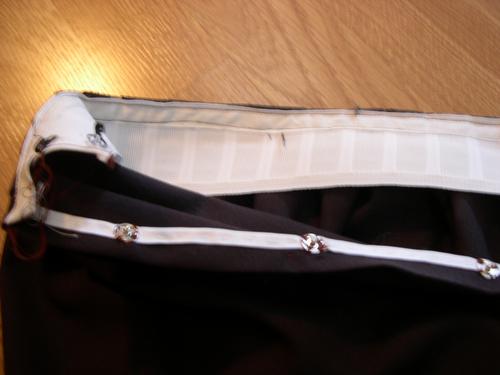 The next step is to finish the waistband. Sew the bottom edge of the twill tape to just the curtain tape, enclosing the raw edge of the wool.
|
The Reproduction
Patterns
The Edwardian and Teens Era
 I'd
like to go home!
I'd
like to go home!